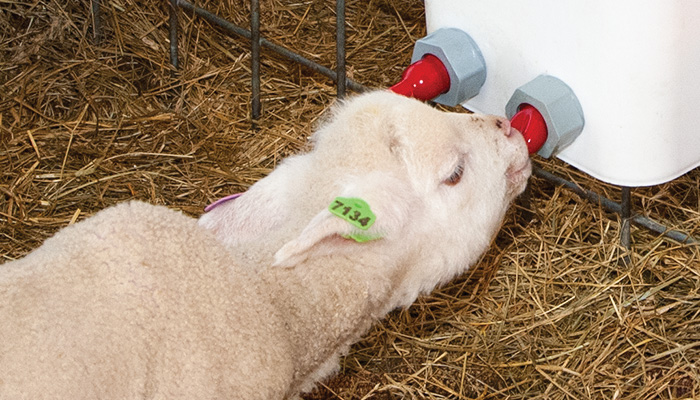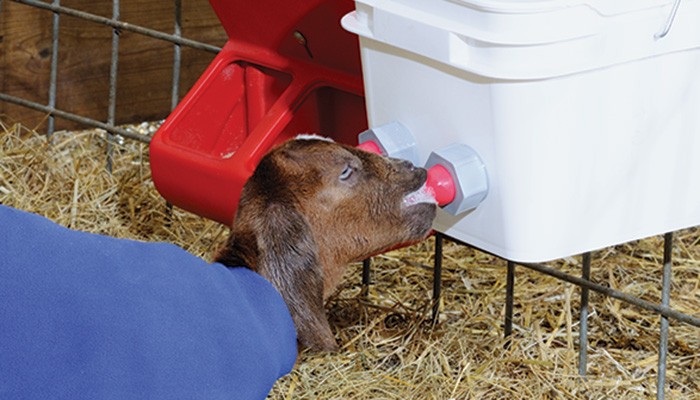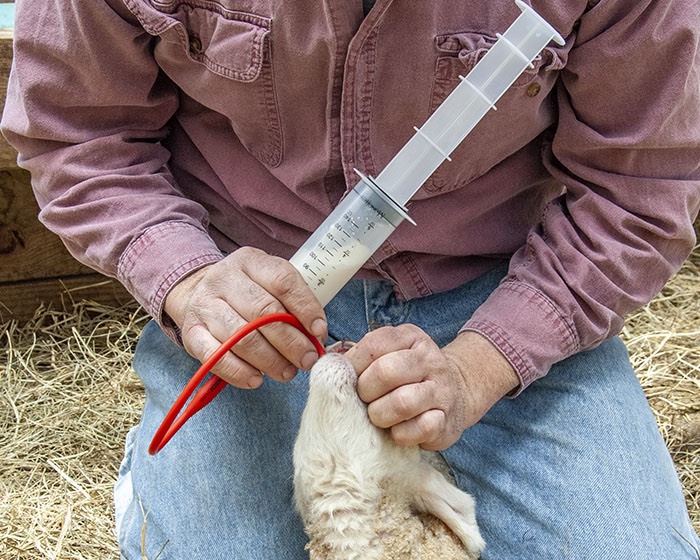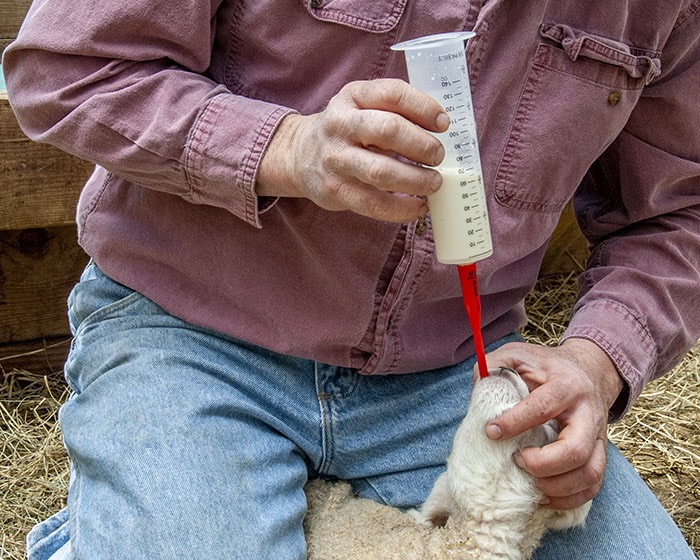Lamb Survival: The first 24 hours…
Tips for healthy and productive lambs
If we can get the lamb through the first 24 hours, its chance of survival is greatly increased. Below are a few things that will help the lambs and the shepherd survive cold weather lambing.
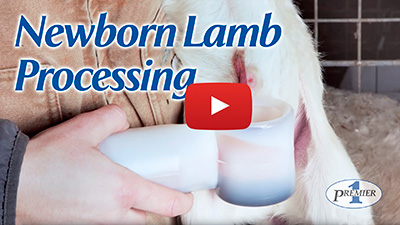
- Create a routine that makes every minute count, beginning when you first walk into the lambing barn.
- Ewes have a wax plug in their teats. In cold weather that plug can be difficult for weak lambs to suck out. So grab each ewe that lambs and strip out each teat to make sure there is plenty of milk for the lambs.
- The next step is to take the temperature of each lamb. Your body temperature is 98.6°F, and the lambs’ temp should be 102°F. If you put your finger into the lamb’s mouth and it feels warm, he is fine. If his mouth feels cold, you have a lamb that is in trouble.
- For any lamb that is warm, all you need to do is to dip the navel into Triodine-7 to help stop infection and they should be fine.
- The cold lambs need help right away. First try to get the lamb to suck for himself. If he will not, you will need to tube feed. We prefer a 140 cc syringe and plastic tube. (In very cold barns, the red rubber tube is better as it will stay flexible.) The 60 cc syringe is too small and must be refilled several times in order to get enough milk in the lamb. We usually mix two measures of NurseMate® First Milk Supplement to 8 oz. of lamb milk replacer.
Important!
If a lamb cannot hold its head up on its own, do not tube feed. Many lambs die because they are too cold and weak when being tube fed, and they drown from the milk. You must first warm up the lamb. Put a heat lamp over the lamb until he can control his head. Then it’s safe to feed him.
Heat lamps and carbon fiber heaters are a great source of warmth when needed, but do not overdo it. When a healthy lamb gets cold, he needs to get up and eat to stay warm. They can become too dependent on heat lamps.
To make sure the lambs have a good start, some shepherds will tube feed every lamb that is born with NurseMate® Colostrum Supplement. Or, you may want to use Baby Lamb Strength Oral (this is not a substitute for colostrum), a product that works well to start all lambs. One pump to each lamb will give them a boost to improve their chances during the first 24 hours.
If your barn temperature is below freezing and you need to be away, put a lamb cover on each of the newborn lambs. It will help them to adjust to the cold before losing too much heat. When you return to the barn, remove the cover and the lamb should be fine.
So remember:
- ✔ Feed the ewes well
- ✔ Strip out every teat
- ✔ Take the lambs’ temperature
- ✔ Tube feed when needed
- ✔ Give each lamb a pump of Baby Lamb Strength Oral
- ✔ Dip all navels in Triodine-7
Enjoy lambing season! It does not need to be stressful.
How to tube feed a lamb
By using the following method you can feed both weak and stubborn lambs/kids quickly and safely.
- Be very careful to gently extend the animal’s chin so that its neck is straight before carefully inserting the tube. If the light is good you can visually observe the bulge of the tube sliding down the neck. In bad light, we use our fingers to feel its presence. If you can neither feel nor see the tube, it may well be in the animal’s hard hollow trachea and thus the lungs. Be cautious of this. If the tube enters the lungs instead of the stomach, pneumonia and starvation could result.
- Pull the tube out gently and restart it. The chance of wrongly inserting the tube is not as great as it may appear. Simply be sure that the tube is inserted in a straight line from the animal’s mouth to its stomach.
- Continue to pass the tube into the stomach. The usual distance is 11 or 12 inches. You cannot pass the tube too far, but it is very important to pass the tube far enough. If it is in the correct position you will hear a gurgling sound through the empty syringe.
- Should the solution not run, the cause could be an airlock. Another possibility with older animals is the teeth could be clamped on the upper part of the tube. If an airlock occurs, slide tube in and out about 1/2 inch.
- Do not ram the milk into the stomach. We usually do not actually insert the plunger unless using thick colostrum which will not flow on its own. If the plunger is used, gently push the milk into the animals stomach.
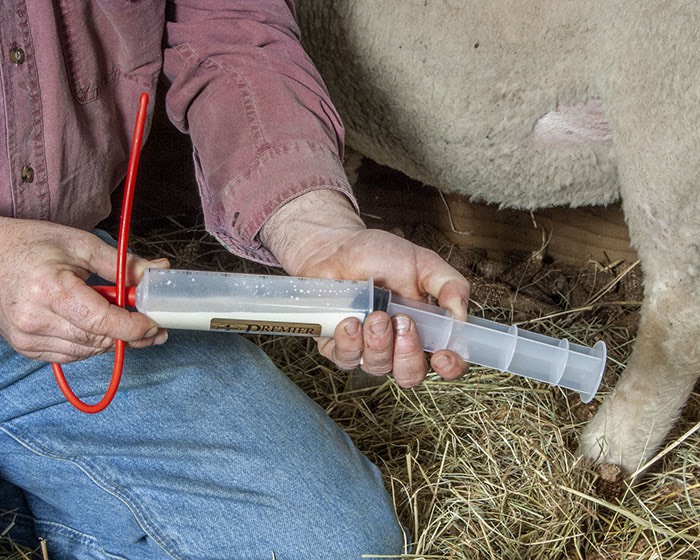
Shepherd’s Choice™ Management Tip
On many farms during lambing time, one tube gets used over and over again without being cleaned or disinfected. Lambs that are being treated for scours or pneumonia should not be tube fed with a common tube. If you tube feed a sick lamb with a tube, wash it, disinfect it and let it dry before using it again. Keep plenty of tubes on hand.What is the correct feeding height for a bottle or bucket teat?
Only as high as a normal mother’s teat, about 9"–12" above the ground.
Why so low? When a young ruminent stretches out its neck to nurse, their esophagus elongates and forms a groove that carries the milk into the 4th stomach (the abomasum).
If the neck is not stretched, the milk falls into the first stomach instead of the 4th. But the first stomach is intended for grass and hay. It doesn’t digest milk well. A first stomach with too much milk enlarges to form a “potbelly”—and the lamb/kid can’t thrive.
